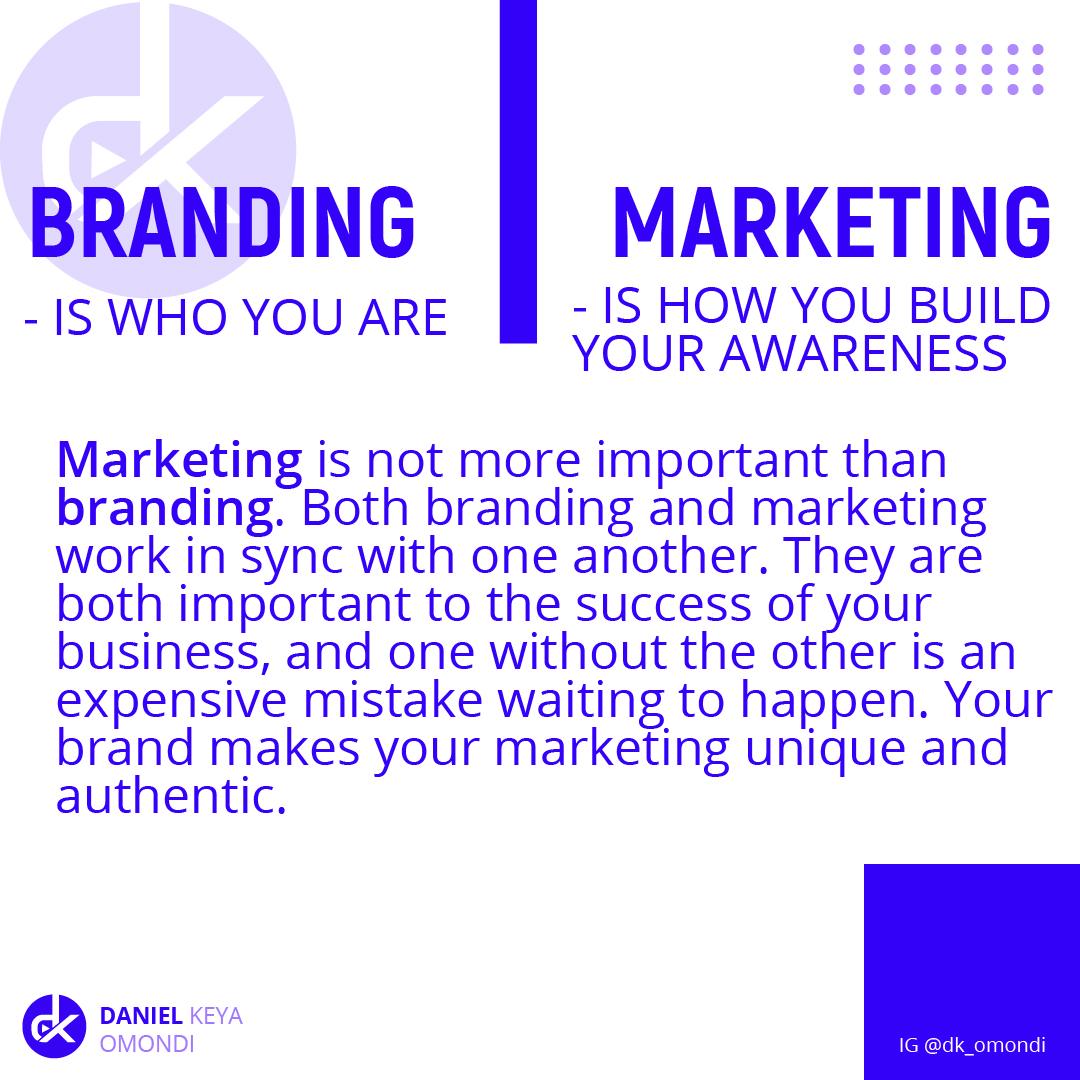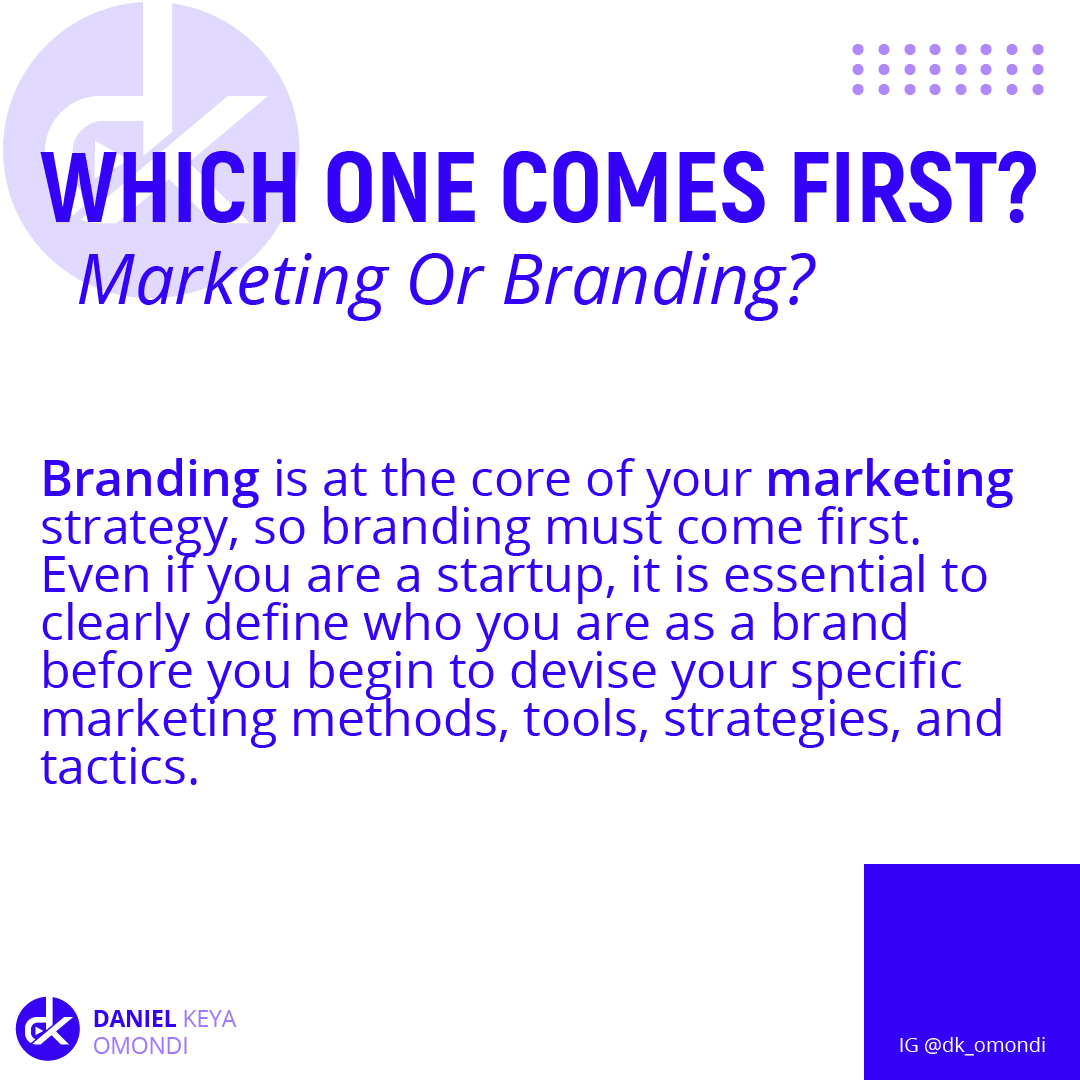What exactly is the difference between Marketing and Branding?

"People's minds contain patterns of familiarity, meaning, fondness, and reassurance that are brands."
Branding is important because it not only makes a lasting impression on customers but also lets them know what to expect from your business. It is a way to set yourself apart from your rivals and make it clear what it is that sets you apart and makes you the better choice. Your brand is designed to accurately reflect who you are as a company and how you want to be perceived.
Advertising, customer service, social responsibility, reputation, and visuals are just a few of the many ways a brand is developed. Together, these and a great number of other components form a singular and, hopefully, captivating profile.
What is branding?
There would be less ambiguity and dissonance regarding the concept if the explanation of branding were straightforward. However, a solid understanding of branding typically necessitates a basic understanding of business, marketing, and even (human) relational fundamentals. Because branding is such a broad concept, a precise definition that truly encompasses everything it represents would not provide sufficient clarity on its own. However, in order to reduce the dissemination of outdated, incorrect, and incomplete information regarding branding, we provide a definition that is more comprehensive:
The continuous process of identifying, creating, and managing the accumulated assets and actions that influence stakeholders' perceptions of a brand is known as branding.
When you contrast this definition with the official Cambridge definition, you can clearly see that Cambridge gives the reader a false sense of understanding because it provides more surface-level information. This might be one of the reasons why the majority of people choose that definition as the foundation for their knowledge-building on the subject and believe it to be accurate. In point of fact, when you learn about branding from a definition that restricts it to a single component—visual identity—every other branding-related concept fails to make sense.
Even though our definition of branding appears to be more ambiguous than the other, delving deeper into its meaning makes the idea make much more sense. A rough breakdown is as follows:
1. Branding is a never-ending process because it never comes to an end. Businesses, markets, and people are always changing, and the brand needs to change with them.
2. Identify, create, and continually manage There is a structured branding process that requires you to first determine who or what you want to be to your stakeholders, then develop a brand strategy to position yourself in accordance with that identity, and finally, manage everything that has an effect on your positioning.
3. Assets and actions over time Your positioning needs to be translated into assets like your visual identity, content, advertisements, and services, as well as into actions like customer service, human relations, and experiences, so that it is gradually ingrained in the minds of your stakeholders.

4. A brand's perception, also known as its reputation. This is how a person thinks about your brand, whether they are a customer or not. The branding process—or lack thereof—has produced this perception.
5. Stakeholders Customers' perceptions of your brand are formed by a variety of factors. Potential customers, current clients, employees, shareholders, and business partners are all examples of stakeholders. Each person develops their own perception of the brand and interacts with it accordingly.
BusinessArticles from Daniel Omondi
View blog
What is the procedure for branding? · A well-defined series of activities called the branding proces ...
Related professionals
You may be interested in these jobs
-

Technician at
Found in: beBee S2 KE - 2 days ago
Gadgetmend International Limited Nairobi, Kenya Full timeGadgetmend is an internationally based company in Kenya, U.S.A & U.K which specializes in Security, ICT and Power backup Systems. Providing the latest end-to-end solutions. Gadgetmend focuses on providing consultancy and state of the art technologies in very solution we provide. ...
-

Principal Business Analyst at
Found in: beBee S2 KE - 3 days ago
KCB Bank Kenya Nairobi, Kenya Full timeKenya Commercial Bank Limited is registered as a non-operating holding company which started operations as a licensed banking institution with effect from January 1, 2016. The holding company oversees KCB Kenya - incorporated with effect from January 1, and all KCB's regional uni ...
-

Programme Officer
Found in: beBee S2 KE - 5 days ago
Article 19 Nairobi, Kenya Full timeARTICLE 19 defends freedom of expression and information. Established in 1987, ARTICLE 19 fights for all hostages of censorship, defends dissenting voices that have been muzzled, and campaigns against laws and practices that silence. · ABOUT THE ROLE · The Programme Officer – Civ ...
Comments
Peter Katana
1 year ago #1
Nice article